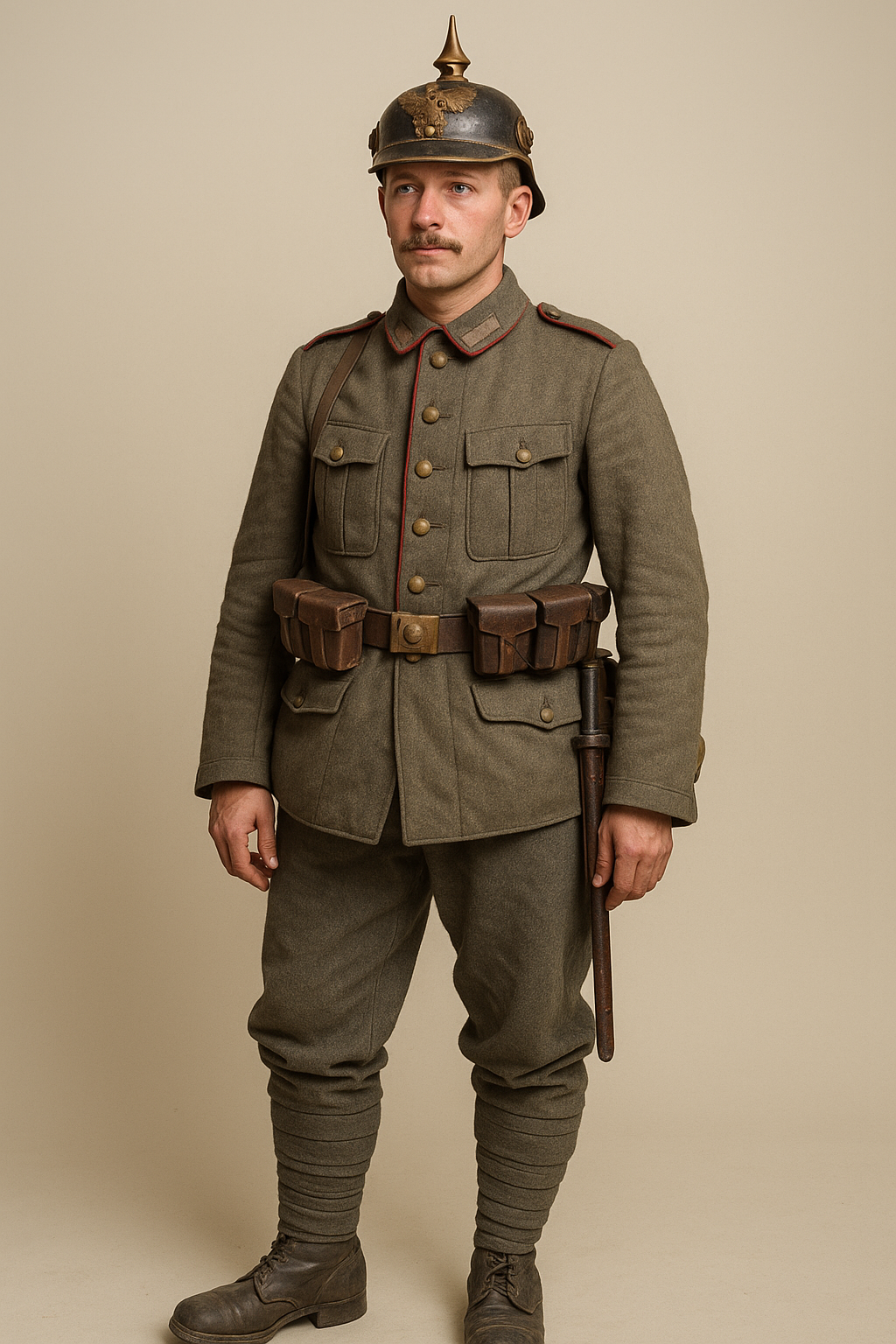
Airborne Uniform Guide: Inside US WWI Uniform Components & How to Collect Them Today
Published on Oct 02, 2025
Introduction: Did You Know Only 5% of WWI Uniforms Were Preserved Intact?
When we think of iconic historical attire, few images are as powerful as a WWI soldier suited up in full gear. But what many don’t realize is how few original airborne uniform pieces have survived. For collectors, reenactors, or history buffs, understanding the structure and story behind the US WWI airborne uniform opens a portal into early 20th-century warfare.
In this guide, we’ll break down each component, reveal how to spot authentic pieces, share actionable collecting tips, and highlight trends in WWI and WWII uniform restoration. Whether you're fascinated by the First World War British uniform, the WW1 French uniform, or the rugged WW2 leather coat, this article connects the dots and helps you navigate the thrilling world of war-era uniforms.
What Was the Airborne Uniform in WWI? (And Did It Even Exist?)
H2: The Evolution of the Airborne Uniform in WWI
Technically, airborne divisions as we know them didn’t exist during WWI. However, US WWI uniform components later influenced the formation of WWII airborne uniforms. WWI uniforms laid the groundwork for airborne gear, especially in terms of:
- Mobility: Lightweight wool tunics, gaiters, and minimal packs for speed.
- Functionality: Reinforced elbows/knees, sturdy boots, and weather-adapted coats.
- Layering: Soldiers wore wool shirts under heavy jackets, similar to modern paratrooper layering.
While not "airborne" in a paratrooper sense, the WWI US soldier’s uniform carried design DNA that shaped WWII’s airborne innovations.
Breakdown: Components of the US WWI Airborne Uniform
H2: Airborne Uniform Breakdown – Every Piece Explained
Understanding uniform components helps collectors identify authentic items or recreate accurate World War I costumes. Here's what made up a typical WWI-era US uniform:
1. M1910 Wool Tunic
- Olive drab wool, high collar with hook and eye closure
- Four front pockets (pleated) with buttons
- Shoulder straps with unit insignia
2. M1910 Wool Trousers
- Laced or buttoned cuffs for compatibility with puttees/gaiters
- Reinforced seat and knees
3. M1917 Steel Helmet
- Modeled after the British Brodie helmet
- Liner and chinstrap distinguish US versions
4. Puttees or Leggings
- Wool or canvas wraps to protect lower legs
- Gave uniform a tidy, tucked-in look
5. M1911 Boots
- Rugged, hobnail leather soles
- Some soldiers used modified versions in WW2 reenactments
6. Greatcoat or WW1 Overcoat
- Heavy wool; double-breasted
- Essential for trench life; resembles WW2 leather coat in weight and cut
7. Equipment Belt and Haversack
- Carried ammo pouches, bayonet, canteen, and entrenching tool
- Haversack design evolved into later airborne gear
8. Identification and Patches
- Shoulder insignia, service chevrons, and rank patches varied by unit
- Collectors should verify thread types and wear patterns
Common Pitfalls When Collecting US WWI Uniforms
H2: Don’t Let Fakes Fool You – Airborne Uniform Pitfalls to Avoid
With the rising popularity of World War I costumes and collecting, reproductions (and outright fakes) flood the market. Here’s how to avoid common mistakes:
- Pitfall #1: Confusing Repro with Original
Modern reproductions often use polyester blends or incorrect stitching. Originals used coarse wool and faded naturally. - Pitfall #2: Misidentifying Patches
Many WWI insignia were hand-sewn or unit-specific. Learn how to read threadwork and stitching direction. - Pitfall #3: Overpaying for Common Items
Don’t get tricked by listings claiming "rare" items. M1917 helmets, for example, are common—but condition matters. - Pitfall #4: Ignoring Provenance
Ask for documentation or a seller's history. Family letters, photos, or unit rosters can prove authenticity.
Real-Life Example: Restoring a WW1 French Uniform
John H., a history teacher in Pennsylvania, found an original WW1 French uniform in a barn. Though moth-eaten, the buttons and collar were intact. He restored it by:
- Air-drying it carefully
- Using museum-grade wool patches
- Photographing each step to preserve its story
This same approach applies to US pieces—document your process for resale or museum use.
How to Start Your Own WWI Airborne Uniform Collection
H2: Airborne Uniform Starter Kit – Actionable Steps for Beginners
Ready to begin your collection journey? Here’s a practical path forward:
Step 1: Choose a Focus
- US infantry? French poilu? British officer?
- Stick with one nation/branch to build depth
Step 2: Learn the Basics
- Read books like “Doughboy to GI” or “Equipping the American Doughboy”
- Join WWI uniform collector forums
Step 3: Start Small
- Helmets, patches, or belts are affordable and authentic
- Avoid expensive jackets until you’re confident
Step 4: Attend Military Shows
- Meet dealers, ask questions, and handle real gear
- Bring a UV flashlight and magnet to test fabrics/metals
Step 5: Preserve Your Finds
- Store in acid-free boxes or garment bags
- Keep away from direct sunlight and moisture
Modern Trends: Airborne Uniforms in Reenactments & Film
H2: Why Airborne Uniforms Are Back in Style
The rise in WWI reenactments and historical films (like 1917 and The Great War) has increased demand for authentic or replica airborne uniforms. Trends include:
- WWI-themed cosplay at conventions
- Museum-grade replicas used in indie war films
- Crossover collecting—people combining WWI and WWII gear, like a WW2 leather coat with WWI trousers
Collectors now want wearable history—not just to display, but to experience.
Conclusion: The Airborne Uniform Legacy Lives On
From trench warfare to airborne drops, the evolution of military clothing tells a powerful story. The US WWI airborne uniform wasn’t just gear—it was a soldier’s second skin. Whether you're collecting, reenacting, or simply admiring, understanding these components helps keep that legacy alive.
